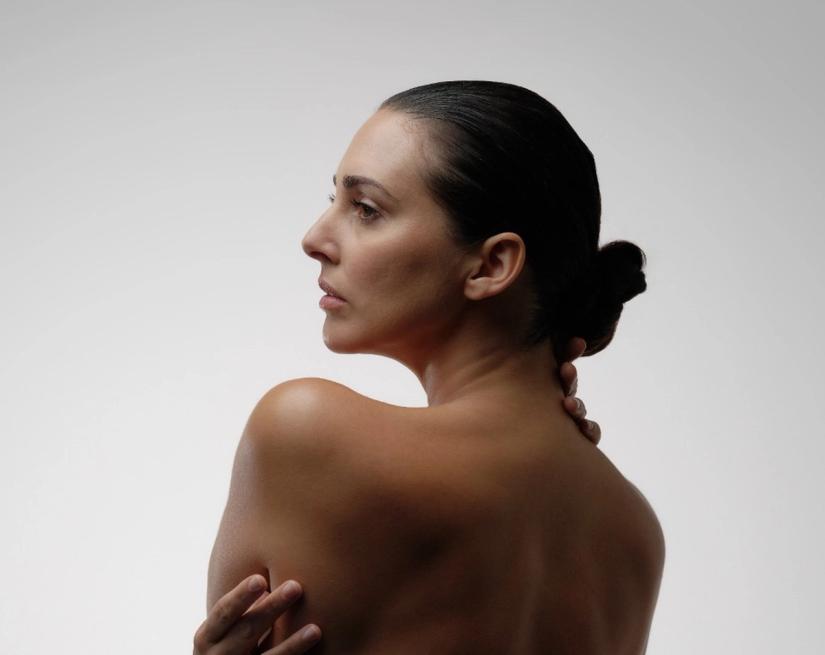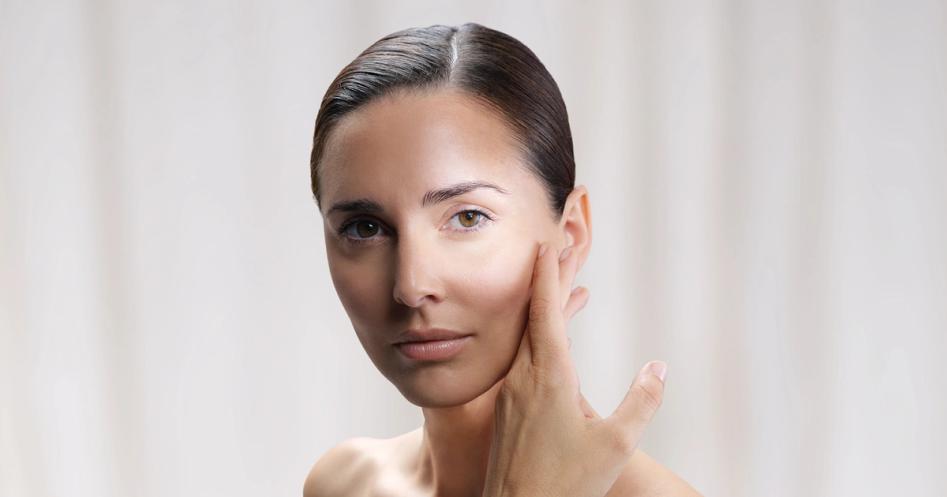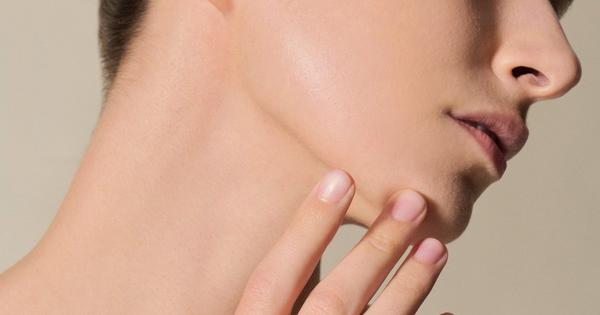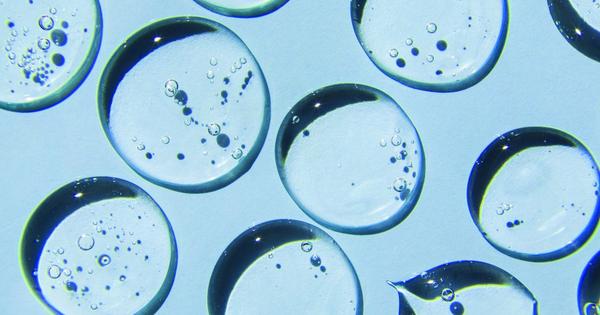SUBLIME SKIN INTENSIVE SERUM
Firming smoothing serum
skin care
Maria Giulia Simonazzi | International Training Manager
8 min de lecture

Face Yoga—a series of facial exercises designed to tone and strengthen muscles—offers quick and noticeable results, with improvements visible in as little as 20 minutes. While these immediate effects are impressive, the true power of Face Yoga lies in its long-term benefits. By strengthening facial muscles and correcting postural and facial expression habits, it helps create lasting, lifelong results. The key anti-aging benefits include lifting and toning the face and neck, reducing and softening wrinkles, and increasing lip volume.
There’s a high chance you’ve heard about Face Yoga since its patenting in 2006 by Japanese master Fumiko Takatsu. But do you really know what it is?
Face Yoga is a corrective facial exercise practice designed to improve the appearance of the face, neck, and décolleté by addressing excessive muscle contractions—repeated tightening of facial muscles that can lead to tension, wrinkles, and loss of elasticity. These contractions may result from external factors, such as stress, or internal factors that contribute to skin aging. As a completely natural and non-invasive facial workout, Face Yoga enhances muscle tone while addressing hypotonia (muscle slackening) through targeted, specific exercises
When performed correctly, this practice involves not only the skin but also the muscles, bone structure, lymphatic system, and nervous system, bringing benefits to the entire body. Among the most notable effects are toning and relaxation.
Although Face Yoga originated back in the 1600s, it has evolved over time. The Comfort zone approach to this practice is influenced by various techniques: Besides facial expressions, we incorporate self-massage and self-awareness because being aware of the movements our face makes involuntarily is essential for preventing wrinkles and signs of aging.

Face Yoga is like a total body workout—but for your face. Imagine spending day after day at the gym, sculpting your ideal physique with strength training, then finishing each session with a relaxing, muscle-releasing massage. In the same way, Face Yoga combines targeted facial exercises to tone and lift with techniques that help release tension and promote relaxation. And just like a gym workout, it requires commitment and consistency to achieve visible, long-term results.
Face Yoga is well-known for its series of facial exercises, but the Comfort Zone method takes a more comprehensive approach. In addition to targeted movements, it incorporates self-massage techniques to enhance results and self-awareness practices to support long-term prevention. These three key elements work together to improve both the structure and appearance of the face.
Face Yoga is highly effective and deserving of the same recognition as a good gym workout or a professionally performed cosmetic treatment—when done correctly.
This practice uses a series of facial expression exercises to both engage and relax muscles, allowing for balanced muscle tone and improved facial structure. It directly targets imbalances in facial muscles, strengthening weak muscles (hypotonia) and relaxing overactive muscles (hypertonia).
We often assume that contracted muscles, like those in the cheekbones, help our face resist gravity and maintain a youthful appearance—and while this is true, there are times when muscle relaxation is just as important. For example, if the corrugator muscle (located between the eyebrows) is frequently tense, this habitual contraction can lead to the formation of wrinkles over time.
Face Yoga also incorporates self-massage techniques that, when performed at a specific rhythm, stimulate the skin and boost collagen and elastin production. These essential proteins naturally decline with age, and restoring them helps support firmer, healthier skin. Self-massage further benefits the lymphatic system by draining excess fluids and toxins that contribute to puffiness and swelling.
Many of the issues Face Yoga corrects are linked to poor posture, which is why it takes a holistic approach. Training sessions focus on improving posture to address the root causes of facial tension and imbalance.
Face Yoga delivers such quick and visible results that they can be noticed after only 20 minutes. However, it is in the long term that this practice truly makes a difference. By correcting postural and facial expression habits and strengthening the muscles, it can be said that the results last a lifetime. In this sense, the greatest benefit of Face Yoga is not corrective but preventive.
An essential rule for maintaining consistent results over time and successfully changing habits is quite simple: consistency. The recommended training frequency is between 2 to 5 times a week.
Practicing Face Yoga is directly related to stress reduction. Working on the face and touching your skin encourages mindfulness, helping you stay present and regain awareness of your body. Research shows that focusing on the present moment is one of the most effective ways to relieve tension.
One key benefit of Face Yoga is releasing involuntarily contracted muscles, such as the jaw and chewing muscles. Chronic tension in these areas can lead to discomfort or even persistent pain. By using targeted Face Yoga techniques, these muscles can be relaxed, often providing immediate relief from stress.
Face Yoga includes many targeted exercises that promote relaxation. For example, by holding a pencil between your lips, you are forced to mimic a smile: when we adopt more relaxed facial expressions, we produce serotonin and dopamine, leading to a more positive mood and lowering cortisol and stress levels. This exercise may seem simple, yet it takes as many as 42 muscles to smile!
To maintain a deep sense of relaxation, we always recommend ending the session with a relaxing self-massage, which induces complete relaxation.
Face Yoga also includes exercises designed to promote relaxation and boost mood. For example, holding a pencil between your lips naturally mimics a smile—a small but powerful movement in Face Yoga. Studies suggest that adopting relaxed facial expressions can stimulate serotonin and dopamine production while lowering cortisol levels, helping to ease stress. While this exercise may seem simple, it actually engages as many as 42 muscles!
To enhance and extend this sense of relaxation, every Face Yoga session should end with a gentle self-massage. This final step encourages deep relaxation, helping to release lingering tension and restore balance to both the face and mind.

Face Yoga is particularly recommended for those seeking an anti-aging effect. Even after the first sessions, many notice a reduction in fine linesand wrinkles, a more defined facial contour, and lifted cheekbones.
Additionally, Face Yoga can enhance lip volume, counteracting the natural shrinking that occurs with age. Here is a list of all the anti-aging benefits of Face Yoga:
Beyond its anti-aging benefits, Face Yoga is also effective for correcting facial asymmetry. Perhaps most importantly, it fosters self-acceptance and boosts self-esteem by increasing awareness of your face and body. More than just a beauty practice, Face Yoga is a meaningful act of self-care—one that everyone can benefit from.
Face Yoga is an inclusive practice suitable for both women and men of all ages. While it’s often assumed to be only beneficial for women with mature skin, this couldn’t be further from the truth.
Thanks to its impact on the lymphatic system, Face Yoga can be a great support for younger people who often struggle with acne-prone skin. However, it is important to remember that for treating specific skin conditions, it is always necessary to consult a dermatologist and use targeted products.
If you're new to Face Yoga, the best way to get started is by incorporating it into your existing skincare routine—a ritual already embedded in your daily life. By introducing new techniques within a familiar habit, staying consistent becomes much easier.
Many Face Yoga exercises can be seamlessly incorporated into your cleansing or toning routine. Imagine using a cleansing technique that not only refreshes your skin but also stimulates the décolleté, neck, and face with your knuckles. Or, even better, applying pressure to specific points on your face—drawing from Chinese meridian principles—to release tension and emotional blocks while applying your toner. This final tapping technique is known as EFT (Emotional Freedom Technique). Here’s an example of a beginner Face Yoga routine to try:
For lasting results, we recommend practicing Face Yoga 2 to 5 times a weekfor at least 20 minutes per session. This timeframe allows you to target all key areas of the face effectively, focusing on one area at a time.
There are many exercises within Face Yoga, each serving a specific purpose. Some focus on toning and lifting, while others help release tension and improve circulation. Whether you’re looking to enhance volume, define contours, or smooth fine lines, these simple yet effective exercises can be incorporated into your routine:
These exercises can easily be incorporated into daily activities, such as while applying skincare, driving, or even during work breaks—making Face Yoga a simple yet effective addition to any routine.
A common misconception about Face Yoga is that it’s less effective than other practices or can be replaced by a good skincare product. However, Face Yoga goes beyond surface-level care by retraining facial muscles and correcting habitual expressions that contribute to aging and tension. This re-educational approach helps restore muscle balance, improve circulation, and promote long-term skin health in a way that topical products alone cannot achieve.
While skincare routines and in-office treatments can correct imperfections and restore a radiant appearance, true prevention plays a crucial role in reducing the formation of these concerns in the first place. Face Yoga helps address underlying muscle imbalances and facial tension, making it a powerful complement to traditional skincare.
There are no specific risks associated with this practice, other than those shared with any type of facial treatment or massage. It is not recommended to practice Face Yoga if you have damaged skin, severe dermatitis, viral infections, or deep bone injuries.
Although extremely effective, Face Yoga does not replace professional cosmetic treatments or your skincare routine. On the contrary! We recommend integrating Face Yoga into your routine, as the best aesthetic results come from a combination of at-home prevention, a consistent skincare routine, and professional treatments.
To maximize the benefits of Face Yoga, you should prioritize a skincare routine that refines skin texture and enhances massage effectiveness. Each Comfort Zone product features biomimetic formulas that mimic the skin’s natural structure, ensuring optimal absorption and a smooth, comfortable application. While many products can complement this practice, we recommend using formulas with active ingredients that amplify the effects of facial massage.
For those focused on anti-aging, our Sublime Skin line is particularly effective. After cleansing, the Sublime Skin Intensive Serum is ideal for Face Yoga, thanks to its fluid, massageable texture. Formulated with Achillea Millefolium extract, it has been clinically proven to reduce wrinkle depth by 25%.
If you're looking for deep hydration rather than targeting specific imperfections, our Hydramemory line is a perfect choice. The Water Source Serum and Rich Sorbet Cream are known for their luxurious, vegan-friendly textures, delivering lasting moisture while complementing your Face Yoga routine.

We can't talk about Face Yoga without mentioning oils. Facial oils are among the best products for self-massage!
Now that you know all about Face Yoga, it’s time to start incorporating it into your skincare routine. Pair it with Comfort Zone skincare collections and facial oils to see how this habitual practice of self-care can help you maintain a radiant and youthful appearance.
Firming smoothing serum
Hydration boosting serum
Hydrating glow cream
Nourishing vitamin oil
Lightweight elasticizing blend